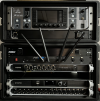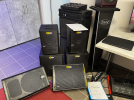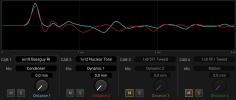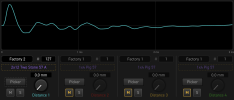Of course, in itself this value is nothing to be concerned about. But as others mentioned, it will be added to everything else in the chain.
I played FM3->X18 a few times in a 6mx6m room (all cables, not wireless) with backing tracks, VERY loud, and I was going CRAZY about the latency. I basically couldn't play. Lost all patience, asked sound guys to enable "direct monitoring" on my channel. They were laughing at me at first, saying there is no delay in X18. Showed me that all filters and blocks on my channel are bypassed, no processing they said.
I don't know the X18 . But I have the X32 and the M32 from Midas here in my studio alongside the RME Fireface.
I've never tested their latency, but maybe I will soon. The X32 probably has a latency of 0.8 ms.
But then you must not loop in any effects, as each effect adds at least 0.7 ms.
I got these values from our sound engineer. Perhaps other users can confirm this?
However, if the console is then used as an interface on a computer and is
not routed directly to the OUTS, but via a DAW, then of course there is a latency.
I played with an X32 for a long time and fed the signal (via AUX) to a Yamaha DXR10. That didn't feel so good.
I now use OUT 2 directly on a Redsound. I am sure that there is no additional latency. But I suspect that the DSP of the Yamaha adds latency.
On the one hand because of the AD_DA conversion but mainly because of the FIR filtering. But I've never measured that either.
It's also interesting what you say about your experience of playing live. That's probably the reason why I'm more relaxed about latency.
My first gig was probably around 1985, but I remember it was an acoustic catastrophe. Two Marshall Plexi fullstacks behind me and the drum 5 metres away on a riser. The hall reflected so much that I must have heard the snare drum three times. Once directly and the two reflections of the rear hall wall and the opposite wall. And at some point I asked myself where is the ‘One'. And the situation didn't get much better over the next few years. And it was loud.

. So forget it if someone says everything was better in the past

I'm not surprised that my heroes from back then, Lukather, Paul Gilbert, Morse, have serious hearing losses these days. I myself have only suffered mild tinnitus.
Back to the topic. I feel very comfortable playing the FM9 via the Redsound.


 . They seem expensive at first, but you get a complete product that keeps evolving.
. They seem expensive at first, but you get a complete product that keeps evolving.



 . So forget it if someone says everything was better in the past
. So forget it if someone says everything was better in the past 

